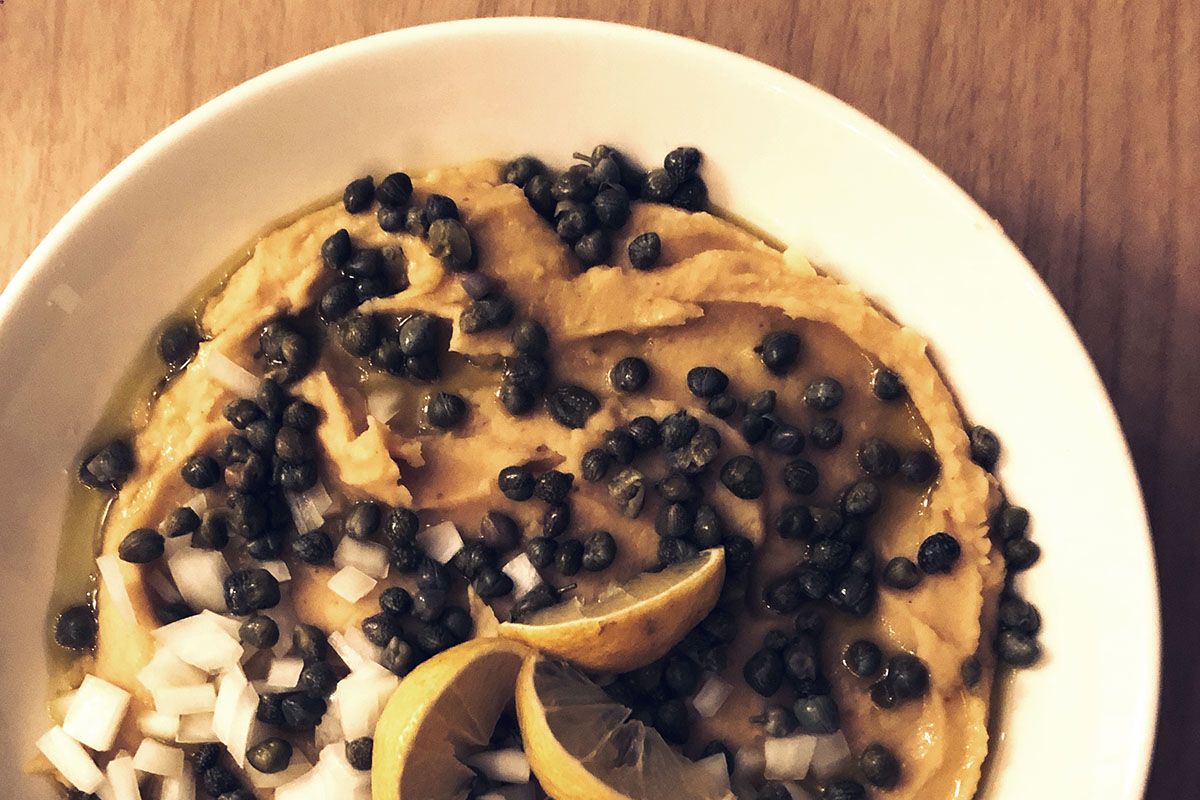
Traditional toppings are chopped, raw red onion, capers and olive oil, but you can get creative. (Kayte Young/WFIU)
This simple, but flavorful dip was typically found in Tavernas--casual dining establishments in Greece. But traditional Greek dishes, like Fava, have become popular in high-end, urban restaurants--often with dramatic variations.
Thanks to Nafsika Papacharalampous for sharing this recipe with us. You can find more of her recipes here, and listen to her walk through the steps of making Fava on this episode of Earth Eats.
1 lb fava (yellow split peas)
1 1/2 liters water (more if needed)
200 ml olive oil
2 medium onions, roughly chopped
2 bay leaves
salt
fresh thyme (optional)
lemon (to taste)
capers (to taste)
red onions (to taste)
Rinse the fava (yellow split peas) under running cold water, until water runs clear. Place the fava in a large saucepan and add cold water. The volume of water you add must be approximately the same as the volume of fava. Bring to the boil, removing any white foam as the fava heats up. Once your fava starts boiling, lower the heat to the lowest possible setting. Add the onions and olive oil, thyme if you are using. Salt to taste but bear in mind, the flavours will concentrate. You can add more salt later. Let the fava cook at very low heat, until it looks like mashed potatoes, stirring occasionally. Yes, fava magically breaks down into mush. If needed, add a bit more water as you go along.
Once the split peas are very soft, blend with a hand held blender until smooth. If you prefer a very smooth dip, pass through a food mill or sieve.
Serve with lemon juice, capers and raw onions. Or, with grape or pomegranate molasses, and dried tomatoes. Drizzle olive oil over all of it.
If it is too liquid, just cook it down. Alternatively you can serve it as a soup. You can blend it smooth, or leave a bit of texture. It is usually served cold or room temp.













